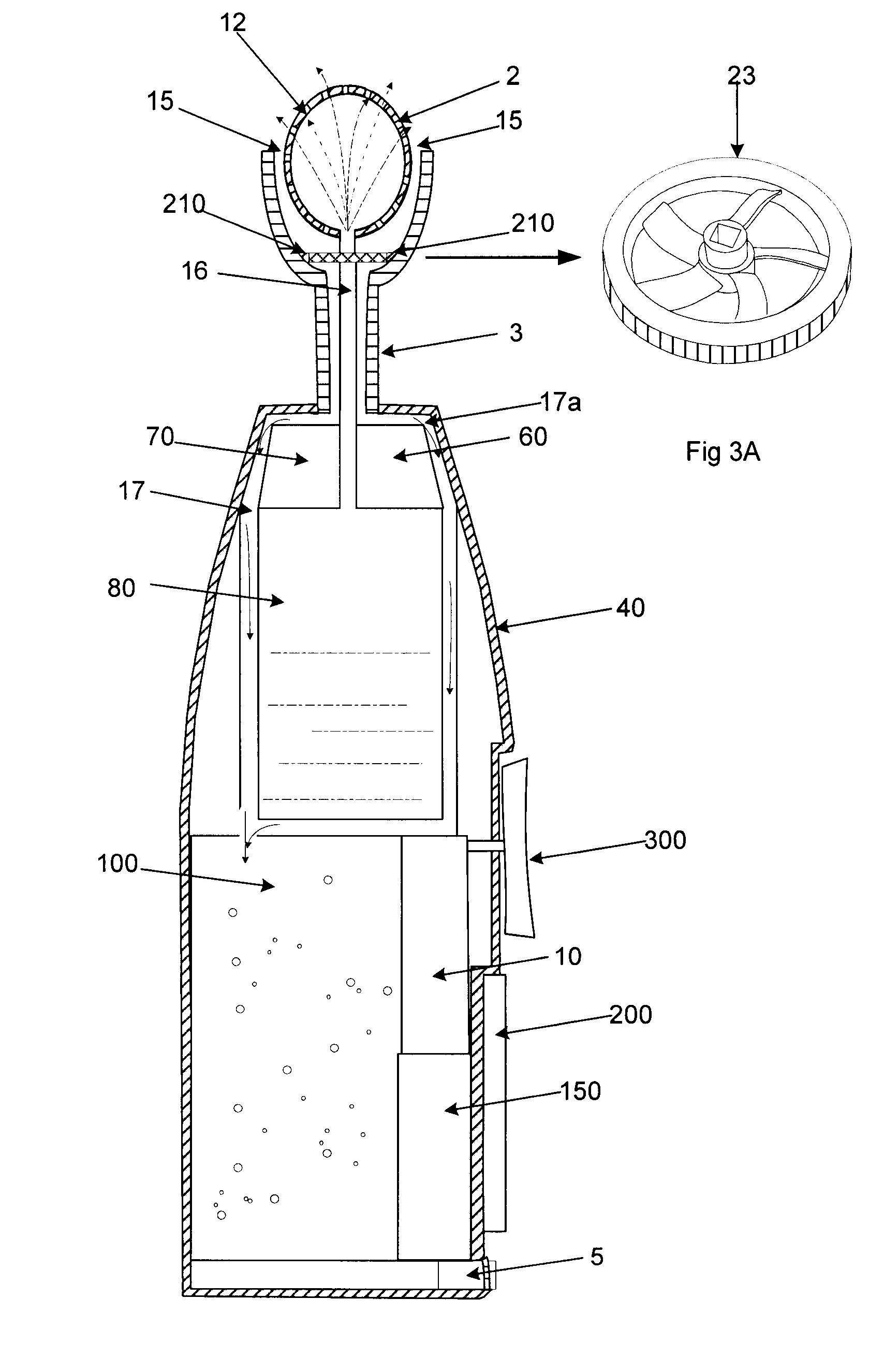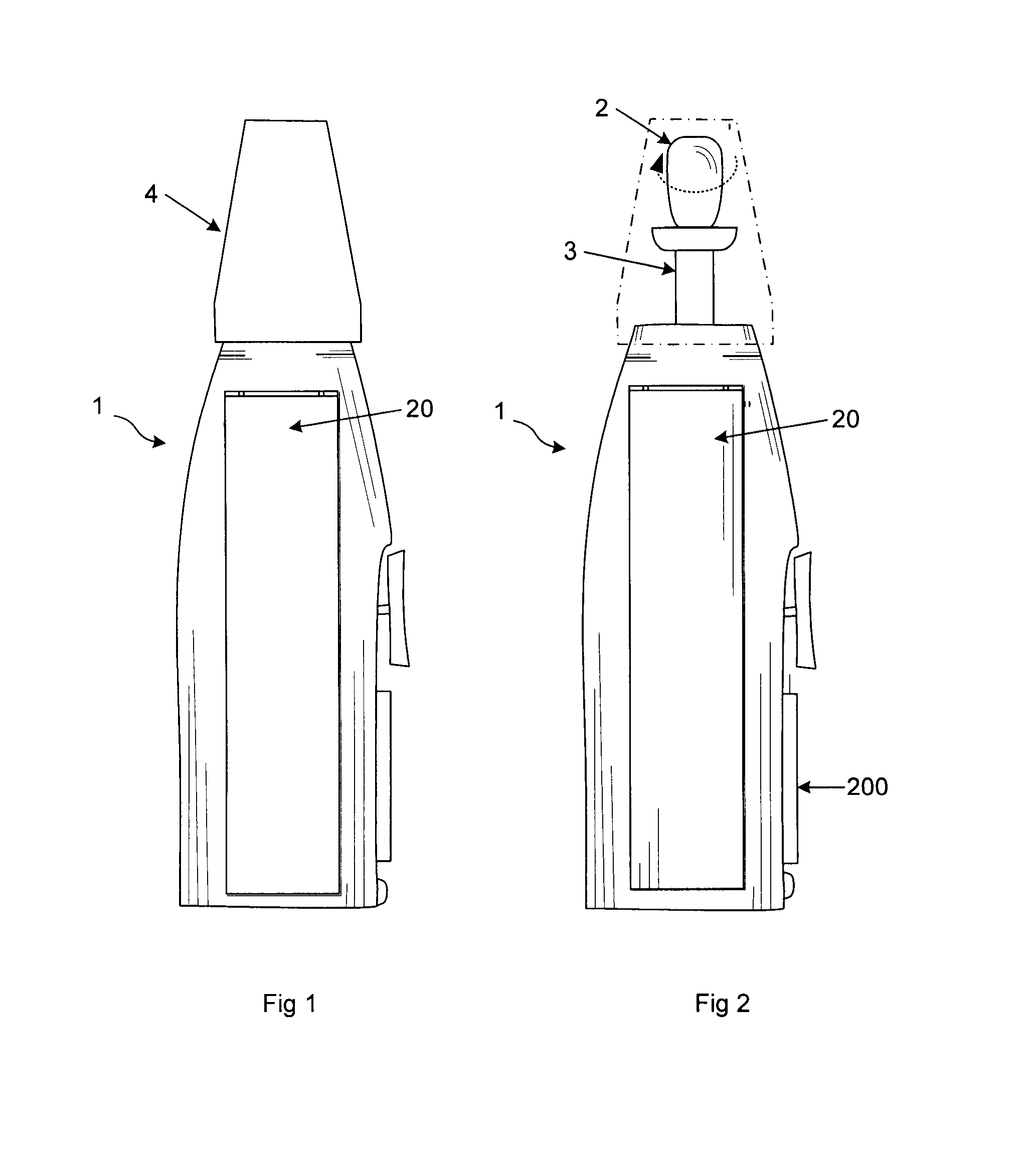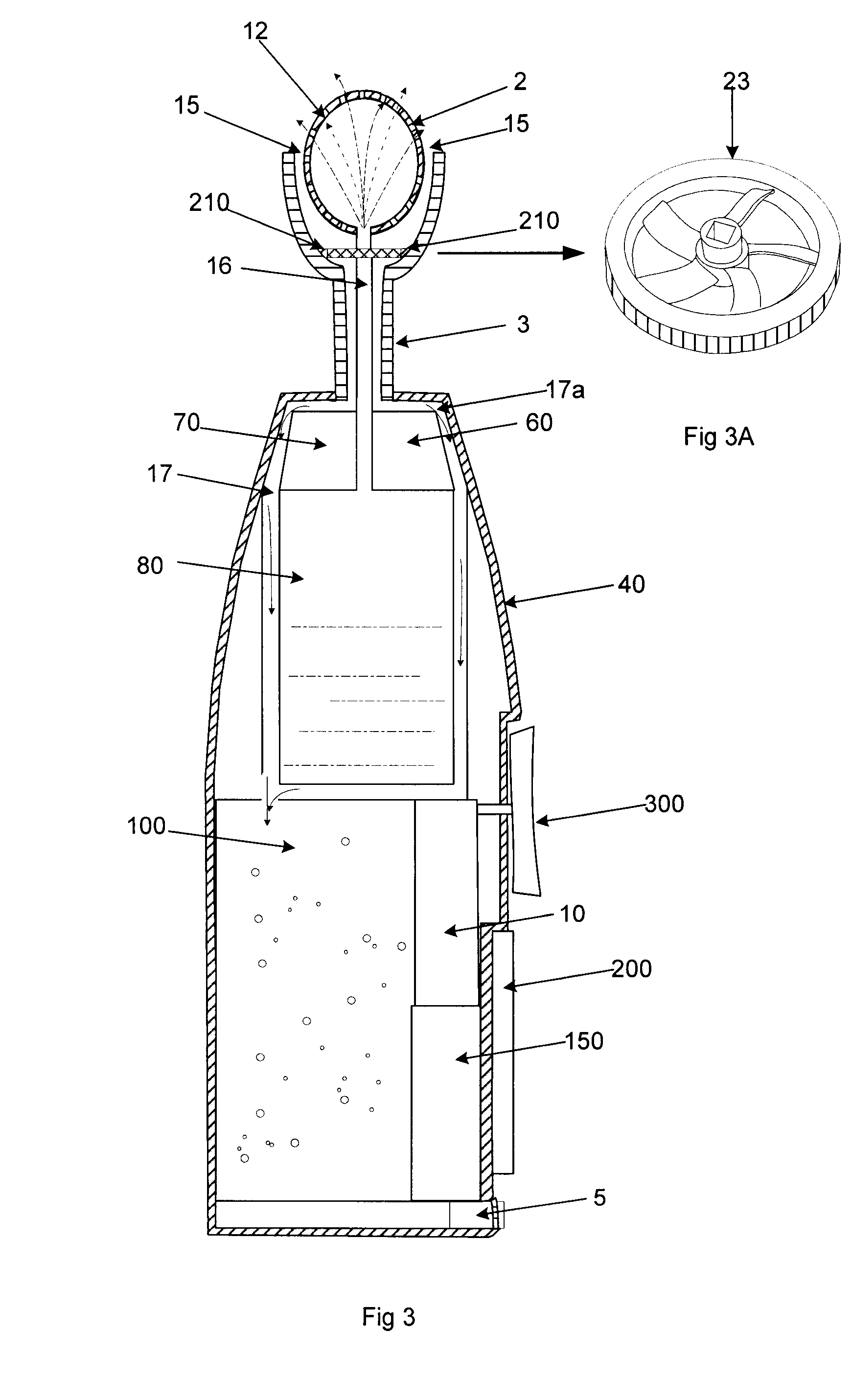Device and method for cleaning nasal cavities
- Summary
- Abstract
- Description
- Claims
- Application Information
AI Technical Summary
Benefits of technology
Problems solved by technology
Method used
Image
Examples
Embodiment Construction
[0031]FIGS. 1 and 2 depict a nasal membrane cleaning device according to an embodiment of the invention. The cleaning device comprises a body 1, a head 2, and a neck 3 connecting the head to the body. A removable cap 4 covers the head and / on neck when not in use.
[0032]As depicted in FIG. 3, disposed in the housing of the body 1 is a processor 10 connected to a power source 5. The body 1 is water resistant shell 40 with a neck 3 for connecting the head. The neck typically extends from a first end of the body. The power source 5 (recharger, batteries or electric cord) is located at the opposite end of the body. The shell 40 is preferably made of a durable material, such as injection molded plastic, silicone, other polymers and / or metals.
[0033]The body 1 comprises means to access the interior of the shell 40, such as but not limited to a hinged door, screw compartment, snap in place component and the like.
[0034]Referring to FIG. 3, The fluid dispensing system includes a fluid reservoir...
PUM
 Login to View More
Login to View More Abstract
Description
Claims
Application Information
 Login to View More
Login to View More - R&D
- Intellectual Property
- Life Sciences
- Materials
- Tech Scout
- Unparalleled Data Quality
- Higher Quality Content
- 60% Fewer Hallucinations
Browse by: Latest US Patents, China's latest patents, Technical Efficacy Thesaurus, Application Domain, Technology Topic, Popular Technical Reports.
© 2025 PatSnap. All rights reserved.Legal|Privacy policy|Modern Slavery Act Transparency Statement|Sitemap|About US| Contact US: help@patsnap.com



